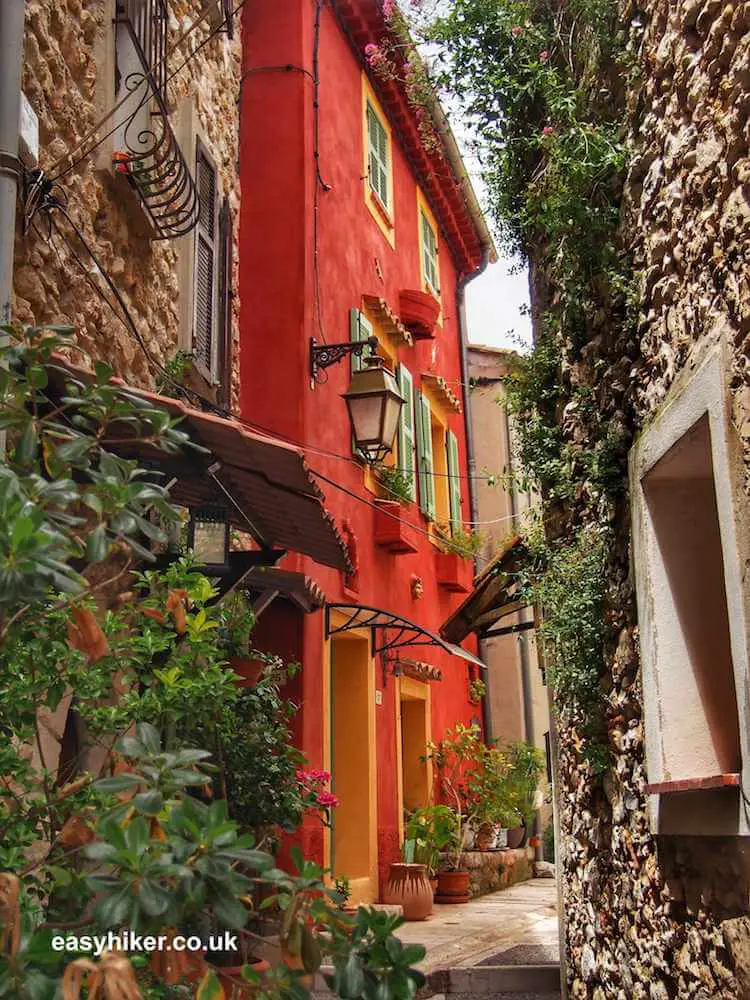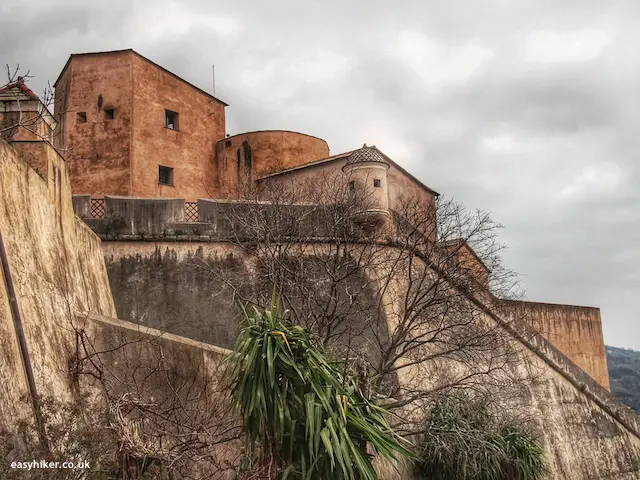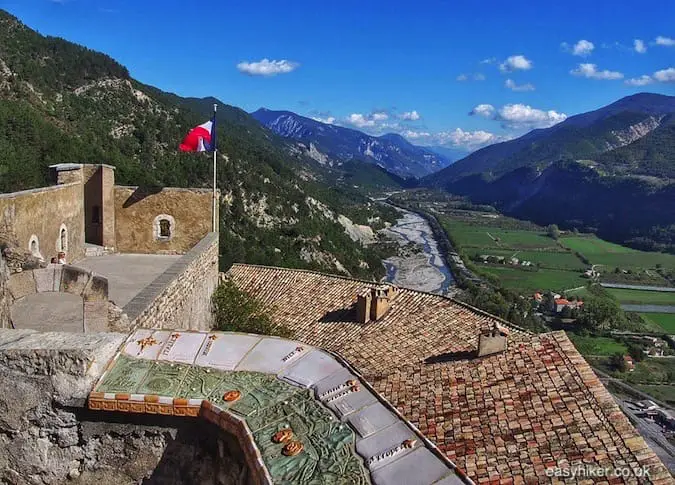Whatever happened to Old Aspremont? It was all a very long time ago.

Modern-day Aspremont – approx. 15 km to the north of Nice – is a picturesque and quiet little place, one of a dozen or so “perched villages” on the list of visitors’ recommendations issued by the Nice tourism office.

But there is more to Aspremont than that. It has an older relative who was abandoned in 1426 but who still hides on the lower slopes of near-by Mont Cima.
For almost 600 years, the ghostlike presence of Old Aspremont has been haunting the countryside, reminding inhabitants of New Aspremont (and all the other towns in the area that it overlooks) that they will eventually suffer the same fate. Memento Mori.

More to the point, perhaps, Old Aspremont makes for a great walk, too. The trail from the New Town to the Ancient Town is short – at approx. 2 km one way – but challenging.
in addition to a pleasant 15th century townscape (modern Aspremont) and the medieval ruins, it features quite a lot of handsome Mediterranean countryside in between.

But first, you must go to Nice and take a bus to Aspremont. You can choose between lines no. 62 or 76, which leave hourly from Magnan and Place du Fontaine du Temple respectively.
Both of these stops are adjoined to near-by tramway stations (Magnan and Comte de Falicon) and therefore easy to reach from Nice-Ville train station.
If you change from the tram to the bus, you don’t need to validate another ticket. You can purchase tickets – returns, too: under the Covid restrictions, no tickets are sold in the bus itself – at the automat on the tramway platform.
Both lines stop in Aspremont Village, near a modern square at the foot of the historic town centre.

Aspremont’s New Town is pretty enough to warrant at least a short visit …

… but it is best to leave that for later because the trail starts close to the bus stop, just outside the City Hall on Rue Caravadossi.
Follow the red-and-white markers of the GR5, turning right into the Montée du Commandant Gerome and continuing up to the Chapel des Sallettes from where you have a splendid panorama with views deep into the heart of the Maritime Alps.

From the chapel, take the trail in the direction of Mont Cima (as signposted) and turn right after a short distance into a path that leads you more steeply uphill to the Route du Barri.
There, you have to turn left for a few metres before continuing your ascent by turning into another footpath on the right (all still marked in red-and-white).
This way to the ruins of Old Aspremont
This path will lead you to a wider dirt road where you will have to leave the GR, so instead of turning right (CDV 15), turn left into the long sweeping curve and, at the apex of the curve, turn right and uphill at the fork (CDV 14).
After another ten metres or so, you will find a steep footpath on your right: this is where you will have to go.

Or rather: take a breather first before you do. If this was an alpine ascent, this would be your base camp. Take a short rest before you learn how Aspremont earned its name of “Mons Asperus” or Hardship Mountain.
The Latin word asperus may be familiar to you as the word for the hardship that you have to suffer on your way to the stars: per aspera ad astra is the slogan for well over a dozen bodies and organisations, ranging from the US state of Kansas to the elite forces of the doomed Martian army in Kurt Vonnegut’s The Sirens of Titan.

After 20 or 30 minutes, you will reach the first ruins.

Now, the worst is behind you, and the trail will flatten out for a bit until it is time for one last push and the final ascent towards the ruins of Old Aspremont.

There is nothing in the world more likely to stir the blood of a true romantic than the sight of ruins scattered over a barren landscape. Just ask Wordsworth.
Or Shelley. Hey: I feel a poem coming up myself, even if it’s not mine. “Now the country does not even boast a tree, / as you see, / where the domed and daring palace shot its spires / up like fires.” (It’s Robert Browning’s.)

So what made the Aspremontois abandon their village? I was intrigued and researched this as soon as we got home, but – disappointingly – failed to unearth a dramatic story of earthquakes or Saracen invasions.
Instead, what seems to have happened is rather prosaic stuff: in 1426, the area’s feudal landlord decided that the location of the old village was too far away from water sources, fields and farms.
If this were Robert Browning’s feverishly excited poem, the landlord would have evicted the villagers in the most brutal fashion, but in reality, he called a meeting and used his powers of persuasion until all 240 heads of households obediently signed a notarial deed to relinquish their homes and to move away.
As soon as the deed was signed, they started to rebuild New Aspremont some way further down the mountain, and twelve years later, the project was completed.
For their building material, the villagers used the stones and beams from their old homes. These would have stood on the left and right side of your ascent.
Yes, the old houses all disappeared without barely a trace, and what you can see on the hilltop are the remnants of the medieval stone castle that was originally built to protect the village.
Yes, I am afraid that reality does not always live up to romantic poetry. But do not let that prevent you from dreaming a little – or from fantasizing about the past in a place where, after all, “a multitude of men breathed joy and woe / long ago”.
Not even the most prosaic soul could deny that.







